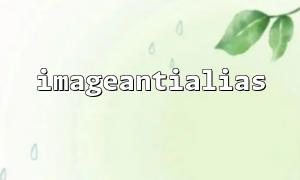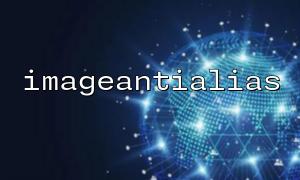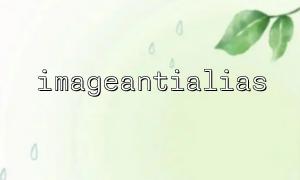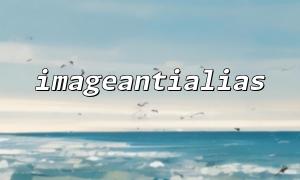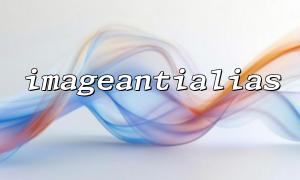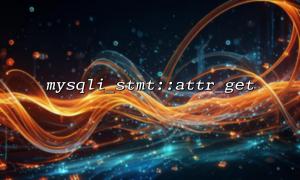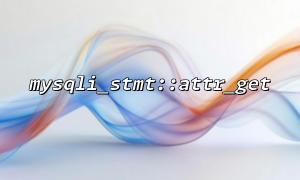In PHP's image processing library GD, the imageantialias() function is used to turn on or off the anti-aliasing function, making the edges of the drawn lines smoother and improving the visual effect of the image. However, many developers often find that it doesn't work or the effect is not obvious when using the function. This article will introduce in detail how to ensure that the imageantialias() function can work properly, and combine sample code to help you understand and apply it.
The signature of the imageantialias() function is as follows:
bool imageantialias ( resource $image , bool $enabled )
$image is an image resource handle.
Set $enabled to true to enable anti-aliasing, and false to turn off.
This function is only valid for certain drawing functions, such as imageline() , imagepolygon() , etc. that have an effect on line drawing, but is invalid for fill functions such as imagefilledrectangle() , imagefill() , etc.
Anti-aliasing function only supports true color images in GD. If you create a palette image ( imagecreate() ), imageantialias() may not take effect. It is recommended to use imagecreatetruecolor() to create images.
Example:
$image = imagecreatetruecolor(200, 200);
imageantialias($image, true);
Calling imageantialias() must be executed before drawing, otherwise it will not work. For example:
<?php
$image = imagecreatetruecolor(200, 200);
imageantialias($image, true);
// Set background colors
$bg = imagecolorallocate($image, 255, 255, 255);
imagefill($image, 0, 0, $bg);
// Set line color
$lineColor = imagecolorallocate($image, 0, 0, 0);
// Draw anti-aliased lines
imageline($image, 10, 10, 190, 190, $lineColor);
header('Content-Type: image/png');
imagepng($image);
imagedestroy($image);
?>
imageantialias() does not work for all drawing functions. It is recommended to use only for parts that need to draw smooth lines. For example:
Draw polygon borders with imagepolygon() .
Draw curves or straight lines with imageline() .
For fill shapes or text, other methods can be used to improve quality, such as rendering anti-aliased fonts using imagettftext() .
Some older versions of GD libraries do not support imageantialias() well, and it is recommended to use PHP 7.0+ and its corresponding newer GD versions. In addition, the effects vary in different operating system environments.
<?php
// Create true color images,Turn on anti-aliasing
$image = imagecreatetruecolor(300, 150);
imageantialias($image, true);
// Fill the background
$white = imagecolorallocate($image, 255, 255, 255);
imagefill($image, 0, 0, $white);
// Set color
$black = imagecolorallocate($image, 0, 0, 0);
// Draw smooth lines and polygons
imageline($image, 20, 20, 280, 130, $black);
$points = [50, 120, 150, 30, 250, 120];
imagepolygon($image, $points, 3, $black);
// Output image
header('Content-Type: image/png');
imagepng($image);
imagedestroy($image);
?>
The above example code can be run directly and ensures normal anti-aliasing function.
